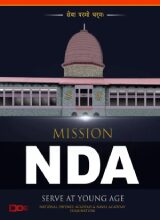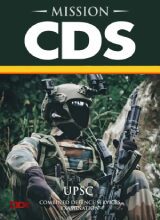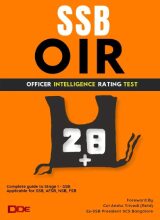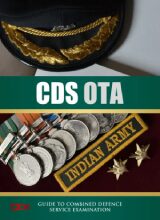Structure and Formations of Indian Army Explained
This article is about the structure and formations of the Indian Army. This tells what section, platoon, company, brigade, division, corps, commands, and regiments are. This will also give a rough estimate of the number of troops each of them has and who heads them.
Formations of Indian Army
Smallest could be a buddy pair.
Buddy pair are two individual who works as a pair, do everything together and have so much trust in each other that In Para SF, training is on the concept of a buddy system. For deadly missions, one needs to have great combat skills and tremendous trust in buddy. For trust exercises, they have to pass a Confidence Firing Test in which real bullets are used.
SEE BUDDY PAIR VIDEO
Squad around 5-6 soldiers. This will include weapon experts, demolition experts, a medic, a communication expert, and based on missions like a sniper or a language expert.
Squad and buddy-pairs are not real divisions but made for the purpose of training or patrols/missions.
After Squad, there comes Section. A section consists of about 10-15 soldiers. It is lead by an NCO of rank Havaldar.
The platoon may consist of 2-3 Sections. A platoon is a lead by a Captain or Lieutenant, or even a JCO(in few cases). It has a total strength of about 30-40 soldiers.
Company: also written (“Coy.”) has about 3-6 platoons. It may be headed by a Captain or Major depending upon size.
Battalion: A Battalion is commanded by a Colonel and is the Infantry’s main fighting unit. It consists of more than 900-1000 combat personnel. 3 fighting companies a support company. Every infantry battalion also possesses one Ghatak Platoon.
Brigade – multiple battalions and support attachments led by a Brigadier. A Brigade generally consists of around 3,000 combat troops with supporting elements. An Infantry Brigade usually has 3 Infantry Battalions along with various Support Elements. In addition to the Brigades in various Army Divisions, the Indian Army also has 5 Independent Armoured Brigades, 15 Independent Artillery Brigades, 7 Independent Infantry Brigades, 1 Independent Parachute Brigade,3 Independent Air Defence Brigades, 2 Independent Air Defence Groups and 4 Independent Engineer Brigades. These Independent Brigades operate directly under the Corps Commander (GOC Corps)
Division – Multiple brigades and support units led by major general or higher rank. Each Division is headed by GOC in the rank of Major General. It usually consists of 3 to 4 Brigades. Currently, the Indian Army has 37 Divisions including 4 RAPIDs (Re-organised Army Plains Infantry Division), 18 Infantry Divisions, 10 Mountain Divisions, 3 Armoured Divisions and 2 Artillery Divisions.
Corps: A command generally consists of two or more corps. Indian Army has 13 Corps & each one is commanded by a General Officer Commanding (GOC), known as Corps Commander, who holds the rank of Lieutenant General. Each corps is composed of 3–4 Divisions. There are three types of corps in the Indian Army: Strike, Holding and Mixed. The Corps HQ is the highest field formation in the army.
- I Corps – Mathura (Uttar Pradesh)
- II Corps – Ambala (Haryana)
- III Corps – Dimapur (Nagaland)
- IV Corps – Tezpur (Asom)
- IX Corps – Dharamsala (Himachal Pradesh)
- X Corps – Bhatinda (Punjab)
- XI Corps – Jalandhar (Punjab)
- XII Corps – Jodhpur (Rajasthan)
- XIV Corps – Leh (J & K)
- XV Corps – Srinagar (J & K)
- XVI Corps – Nagrota (J & K)
- XXI Corps – Bhopal (Madhya Pradesh)
- XXXIII Corps – Siliguri (West Bengal)
Command: Indian Army has 6 operational commands and 1 training command. Each one is headed by a General Officer Commanding-in-Chief (GOC-in-C), known as Army Commander, who is among the senior-most Lieutenant General officers in the army. Each command is directly affiliated to the Army HQ in New Delhi. There is also the Army Training Commanded abbreviated as ARTRAC.
The Andaman and Nicobar Command is the first and only Tri-service theater command of the Indian Armed Forces, based at Port Blair in the Andaman and Nicobar Islands.
The Commands of the Indian Army are:
1. Northern Command, HQ- Udhampur(J&K)
2. Western Command, HQ- Chandigarh
3. Central Command, HQ- Lucknow(UP)
4. Eastern Command, HQ- Kolkata(WB)
5. Southern Command, HQ- Pune(MH)
6. Western Southern Command, HQ- Jaipur(RAJ)
7. Training Command, HQ- Shimla
Southern Command Insignia
Lt. Gen Anil Chauhan, who has vast experience in counter-insurgency operations, on Tuesday took charge as the new Director General of Military Operations (DGMO) of the Indian Army.
He succeeds Lt General A K Bhatt who will assume charge of the Srinagar-based 15 Corps.
WHERE DOES REGIMENT FIT IN?
The ORBAT (Order of Battle) is not organised on the lines of Regiments in the Indian Army. Instead the fighting formations are organised on an ascending order from Battalion > Brigade > Division > Corps > Command.
In the Indian Army, the Regiment is a purely administrative entity. All Battalions of a particular recruiting area are clubbed together into a Regiment. For example, The Assam Regiment contains say 10 Battalions and the Punjab Regiment contains for eg. 12 Battalions. Now for the purpose of recruitment and feeding new troops to the Battalions (due to retirement, medical invalidment or casualty in armed operations) all battalions of one name depend on one Recruit Training Centre which is designated as the Regimental Centre. Therefore, the Assam Regimental Centre and the Punjab Regimental Centre or the Grenadiers Regimental Centre etc.
In addition to the Regiments, the term Corps also has administrative existence apart from the fighting formation designated as Corps above. Therefore the Indian Army also has the Armoured Corps and the Corps of Signals and the Corps of Electrical and Mechanical Engineers and so on. Broadly from a civilians point of view, it can be said that Infantry Battalions are administratively organized as Regiments and other Fighting Arms and Services are organized on the basis of Corps – So we have the Army Educational Corps; the Army Medical Corps; the Ordnance Corps etc.
The Guards Infantry Units don’t describe themselves as a Regiment. They are known as the Brigade of the Guards. The reason for this is their history continuing from the British Indian Army which took its organizational structure from the British Royal Army.
Artillery and Armoured units are an exception where a unit of combat arms is organized as regiments. For example 4 Armoured Regiment, 76 Field Artillery Regiment etc.
In addition to this Artillery as a group is also described as the Regiment of Artillery. Reason: Tradition starting from old Cavalry regiments.
Now there are some administrative corps of Indian Army as follows-
- Army Aviation Corps
- Army Medical Corps
- Army Ordnance Corps
- Corps of Military Police
- Defence Security Corps
- Indian Army Service Corps
- Indian Medical Service
- Military Nursing Service
- Indian Army Corps of Signals
Source of this article are multiple. Any suggestion/improvements are welcome.
Read my other posts here:
The story behind badluram ka badan
10 facts about the Indian Air Force
JAI HIND!









 Buy Now on Amazon
Buy Now on Amazon
